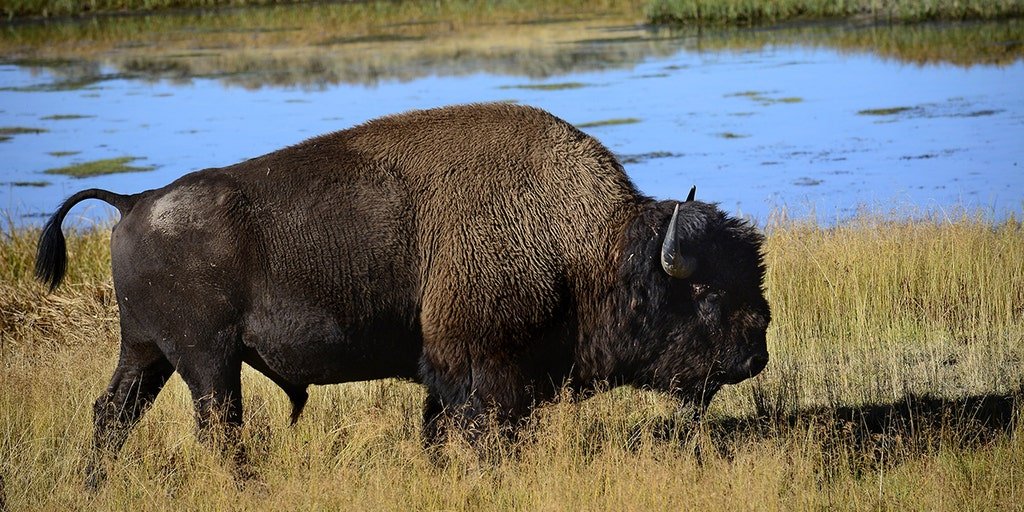Yellowstone’s Hot Springs: Beauty and Danger Intertwined
On an unassuming June afternoon, a bison accidentally veered too close to the mesmerizing colors of Grand Prismatic Spring, one of the largest hot springs in the world. As it slipped into the scalding waters, the scene quickly transformed from a peaceful nature walk into a somber reminder of the precarious balance between the allure of Yellowstone National Park’s geothermal features and the hidden dangers they pose. With temperatures reaching near boiling points, this tragic incident encapsulates a frequent yet often overlooked reality: nature can be both breathtaking and perilous.
The Natural Marvel of Grand Prismatic Spring
Grand Prismatic Spring, measuring over 300 feet in diameter, is renowned for its vibrant colors, created by microscopic organisms that flourish in its extreme heat. These thermophiles, prevalent in Yellowstone’s geothermal areas, showcase the park’s unique ecosystem and geological wonders. Dr. Lisa Foster, a geothermal researcher at the University of Montana, noted, “Grand Prismatic Spring serves as not just a stunning visual spectacle, but as a living laboratory that aids in our understanding of extreme life forms.” Her studies suggest that the organisms’ resilience to high temperatures could inspire medical advancements.
Understanding the Dangers
Despite their beauty, these thermal features demand respect. The recent bison incident is not an isolated case. The National Park Service (NPS) reports numerous animal fatalities occur annually due to inadvertent encounters with hot springs. While creatures like bison typically possess some sensory awareness of heat, slips can happen, rendering them vulnerable.
- Temperature Awareness: Animals can sense certain heat levels, but they might misjudge proximity.
- Fatal Incidents: The NPS noted a minimum of ten animal deaths linked to thermal areas each year.
- Visitor Caution: Over 60 incidents involving humans have been reported in less than a decade, primarily attributed to straying off marked paths.
Human Interactions and Safety Measures
The tragic death of the bison highlights not only the animal’s misstep but also the critical need for stringent safety practices among park visitors. NPS officials emphasize remaining vigilant while navigating thermal areas, particularly on designated boardwalks. Dr. Ethan Blake, an environmental safety expert, warns that “the crust covering many hot springs can be deceptively thin. Steps taken off marked paths can lead to severe injuries or even fatalities.”
In light of these risks, the NPS has implemented several measures to enhance visitor safety:
- Safety Signage: Informative boards are strategically positioned throughout the park, detailing the hazards of thermophilic environments.
- Guided Tours: Rangers often lead educational sessions to inform guests about the beauty and danger of geothermal features.
- Emergency Protocols: Quick-response teams are trained to manage incidents that may arise in these sensitive zones.
The Role of Natural Processes
Beyond visitor safety, the cycle of life and death in Yellowstone’s hot springs plays a crucial ecological role. The NPS has chosen to allow the bison’s remains to decompose naturally within the hot spring, opting to let nature reclaim its resources. Research indicates that “animal carcasses contribute essential nutrients to the ecosystem, enhancing the surrounding bacterial mats that contribute to the spring’s vibrant colors,” explains Dr. Hannah Monroe, a wildlife ecologist.
This natural decay process is emblematic of Yellowstone’s broader ecosystem dynamics, where life feeds on death in a continuous cycle—an idea that often resonates with park visitors, revealing the raw beauty and harsh realities of nature.
A Call for Respect and Awareness
The story of the bison serves as a poignant reminder that Yellowstone National Park is a complex interplay of awe-inspiring landscapes and latent dangers. While it beckons millions of visitors each year with promises of natural beauty, each individual must navigate its terrain with caution and respect. As the NPS firmly states, “You are responsible for your safety. Think safety, act safely—Yellowstone is a dangerous place.”
The Grand Prismatic Spring continues to mesmerize, drawing visitors from around the globe, but the message is clear: appreciate its beauty, respect its power, and always remember the thin line between adventure and tragedy in the heart of nature.









